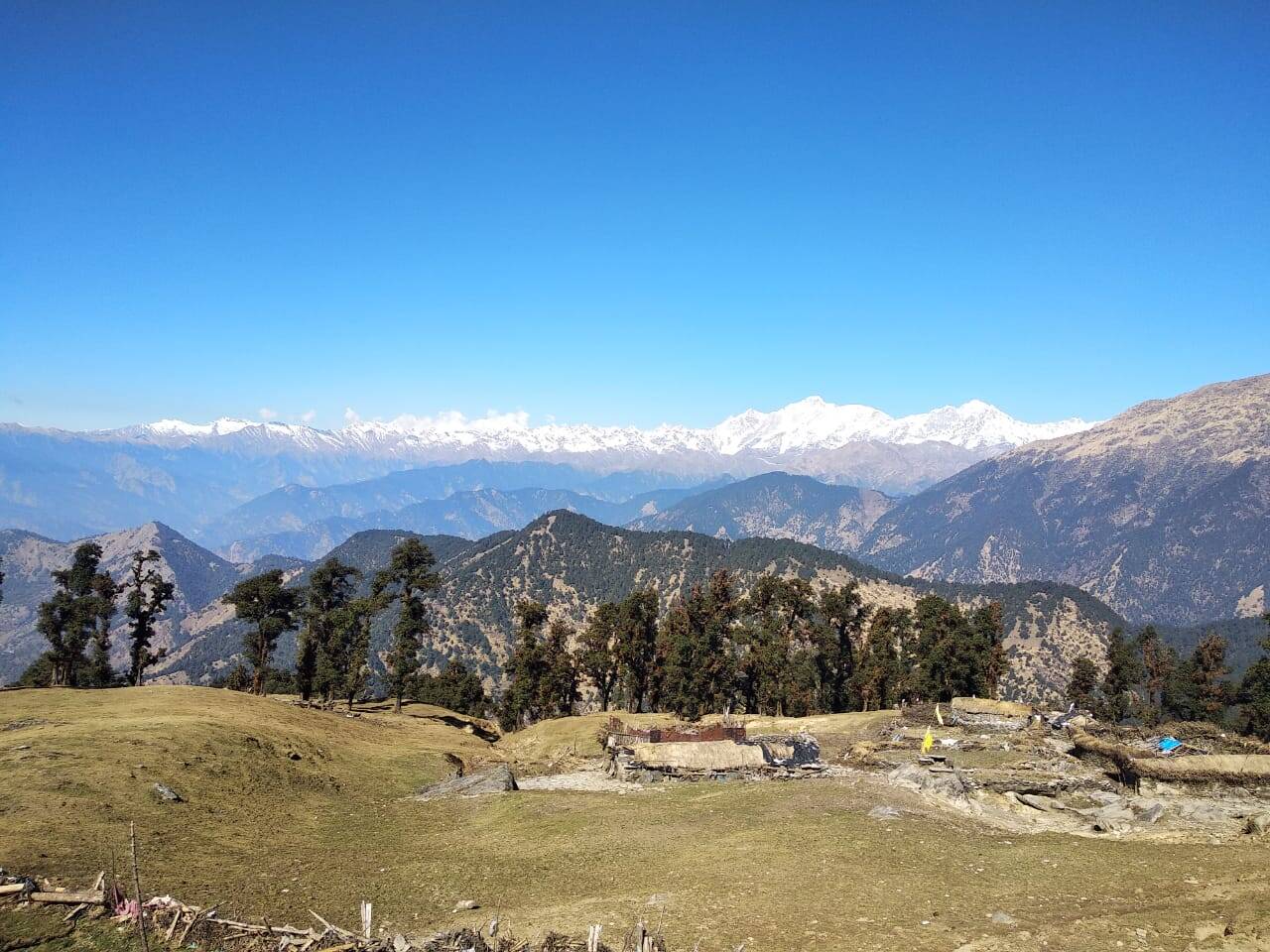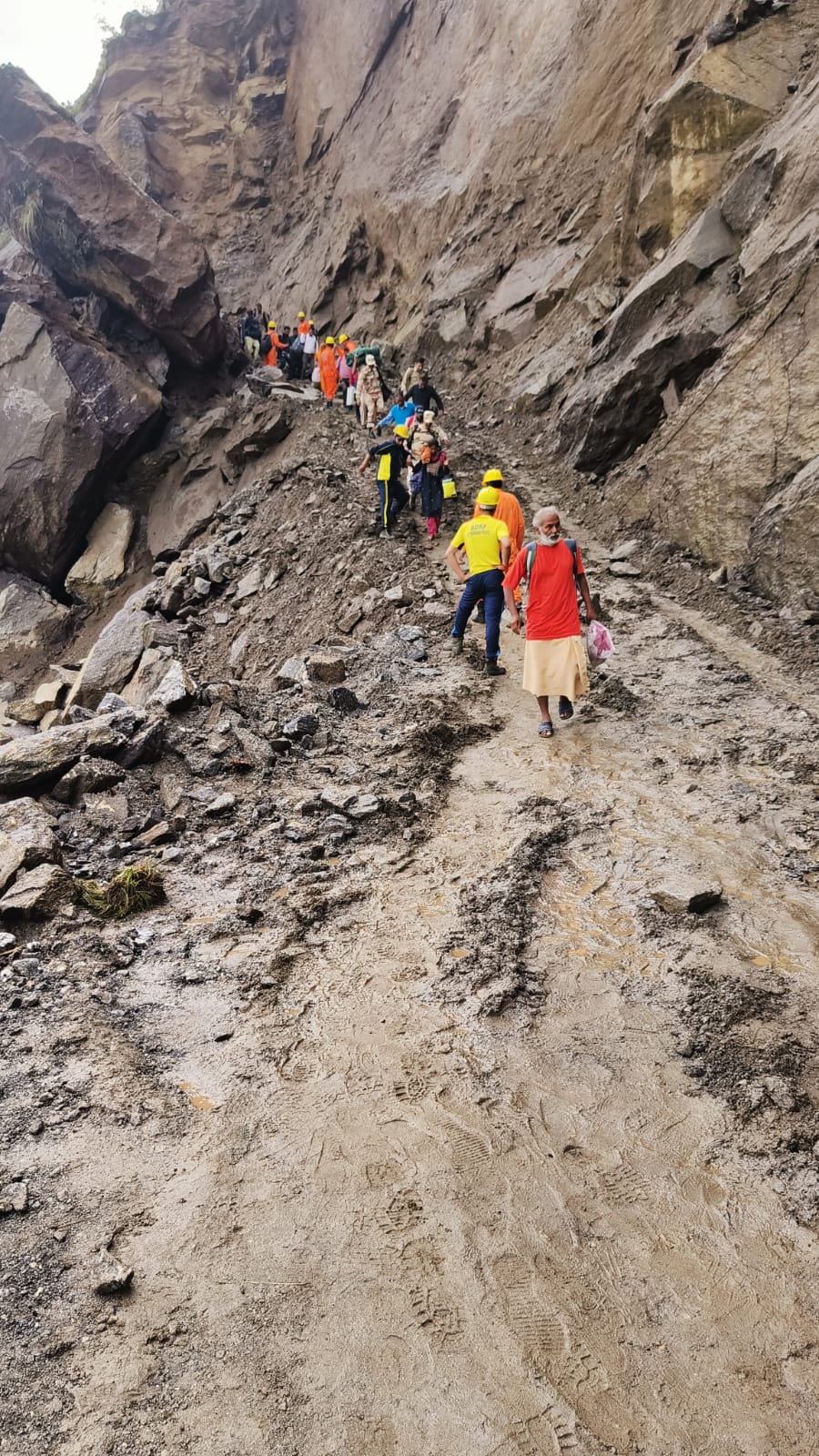
How a flawed SC judgment devastated Himalaya

Simultaneously, railway lines entailing aprox 240 km of tunneling that would riddle the fragile and still-moving Himalaya were approved. Since the four Char Dham valleys are closely joined, all this activity would be within an aerial radius of merely 50 km. These matters are before the Supreme court, but a landslide-ridden, disaster-prone, crumbling Himalaya indicates that our policies, our development agenda, and our judgements have vitally erred in handling these two most critical challenges of development along the Ganga and the Himalaya.
The issue of HEPs on the Ganga and her tributaries has been widely protested and taken to court. But the Supreme Court, although starting well, seems to have lost direction along the way. After the Kedarnath tragedy of 2013, in which the Mandakini and Alaknanda flooded, wiping out four HEPs, killing over 5000 people and ravaging the valley, the Justice Radhakrishnan bench of the apex court, taking suo motu cognisance of the bumper to bumper HEPs along these rivers, stayed 24 proposed HEPs. The 17-member committee (Expert Body 1) constituted to investigate if constructed and under-construction HEPs had ‘contributed to the tragedy’ found that the worst damages had occurred in areas around the hydro projects, and that such projects caused ‘irreversible damage’ to the environment. Their report was submitted in 2014.
However, despite the stay and this report, in Dec 2014, Justice Deepak Mishra bench made an inexplicable u-turn by opening 6 of the stayed 24 projects to be considered for construction, whereas not only had these projects been halted, but were as yet only proposed. This was in absolute contradiction to the starting point of the entire case wherein the court had raised the threat posed by existing and under construction HEPs; thus, considering proposed projects was completely out of the reckoning. Then the government, bypassing EB 1 findings, inexplicably constituted another 4-member committee headed by Vinod Tare for assessing these 6 projects. Yet again this committee found these projects unfeasible and suggested reviewing environmental clearances. Astoundingly, in 2015, for the third time, the government constituted yet another committee, Expert Body 2. The court made no objection to this evident manipulation.
Unsurprisingly, finally this body chaired by BP Das, permitted all HEPs (excepting Gangotri valley) amounting to 28 with design modifications. In a clear conflict of interest, BP Das had been a member of the environmental appraisal committee that in the past had cleared these very projects. Then in 2024, the Justice Gawai bench wanted clarification as to why only 7 of the 28 projects were being considered for construction and not all of them. The response is still pending. Fortuitously, in 2010, four bumper to bumper HEPs were cancelled in Gangotri valley, which if had they been built, the devastation in the recent glacial avalanche and cloudburst at Dharali, Harsil, Suhki and Loharinag — sites of these projects and downstream — would have increased exponentially.
Thus, the court, which started with questioning under-construction and existing HEPs and found their impact devastating, has wound up in the diametrically-opposite direction of green-signalling all HEPs, even those that are just in the proposed phase. Such an illogical contradiction cannot be swallowed as a sacrosanct judicial process. It is in fact a classic example of succeeding judicial benches dragging a single case in entirely contradictory directions and thereby obfuscating an issue to the point where black is seen as white. In this case, it is endangering lives.
The second “Himalayan blunder” is in the CDP. The entire project is one of gross manipulation by the government to impose its predetermined, irrational and unscientific width of 12m (10m tarred), even when experts warned of consequences, and even as the Himalayan slopes collapsed in hundreds of landslides and slope failures. The CDP was inaugurated as a grand tourism project, but locals, foreseeing the threat through slope cutting, filed a PIL asking for a review. The PIL exposed the duplicitous evasion of the mandatory Environmental Impact Assessment (EIA) by breaking the single 900 km project into 53 projects, each under 100 km, thereby escaping the EIA requirement. Thus, a project in glacial zones, involving the felling of over 53,000 trees in the Himalaya, including old deodar, oak, pine and red cedar; the destruction of forests; the stripping of top soil which nurture forests; the cutting of slope after slope in the pristine Char Dham river valleys triggering recurring landslides; the generation of hundreds of tonnes of muck and debris that ultimately were dumped into rivers like Bhagirathi, Alaknanda, Mandakini, dodged vital environmental scrutiny.
At this juncture, the Nariman bench in 2018 ordered the constitution of a high-powered committee to review the project and ‘bring the project in conformity with the steep valley terrain, carrying capacity, thus avoiding any triggering of new landslides and ensuring conservation and protection of sensitive Himalayan valleys.’ When it was found that the ministry of road transport and highways (MoRTH) had violated its own 2018 circular which stipulated an intermediate width (IW) of 5.5m for hilly terrain in the CDP, the court ordered that the IW would apply both retrospectively and in the future.
However, the failure of the judiciary in the CDP now begins. Finding no other recourse, the government made a u-turn and declared the CDP a defence project of strategic importance, even though the CDP was introduced to the public on Dec 23, 2016 by MoRTH during the project’s inauguration by PM Narendra Modi at Parade Ground in Dehradun as “a project aimed at improving the connectivity to the Char Dham pilgrimage centres in the Himalayas, making the journey to these centres safer, faster and more convenient.”
Even though it was evident that the defence intervened only when it seemed that the IW would prevail, the court failed to call out this bluff. The Justice Chandrachud bench was provided with ample evidence of over 200 landslides triggered by the blanket vertical cutting of steep slopes. It had no answer to the irrefutable, pivotal argument of the non-governmental experts of the HPC, who were unfortunately a minority, that a disaster-resilient road, even though of IW, is in fact the best for defence and mobility. Ironically, in its 83-page long judgement, the Justice Chandrachud bench, while waxing eloquent on ‘sustainable development’, sanctioned the single most devastating project in the Himalaya.
When permitting the 12m road as a defence requirement, its order stated: ‘This court in its exercise of judicial review cannot second guess the infrastructural needs of the armed forces… This is impermissible.’ In the same vein, it further elucidates, ‘Balancing the interests of defence as against environmental considerations was outside the ambit of the HPC.’ Thus, was set up the false narrative of environment versus defence. Moreover, the experts as directed were simply presenting the most stable, least landslide-ridden, least prone to slope failures, least in threat of washing away due to toe-cutting, and the most disaster-resilient road possible in the fragile Himalayan terrain, and not ‘second-guessing’ defence requirements. In fact, although the Justice Chandrachud bench considered reviewing the MoD application as impermissible, contrarily, the Justice Nariman bench had directed this very review, a year earlier in order dated Nov 27, 2020. And isn’t it obvious that a stable environment, a stable Himalaya, is our best defence? Isn’t it expected that since MoD does not itself have geological expertise, that it would determine its needs in the context of what the terrain can practically sustain? There were 161 road-blocks and landslides on the three ‘strategic’ stretches of Badrinath, Pithoragarh and Gangotri as reported by Morth – and only till 2020. Last year at Swala, Pithoragarh, the highway was blocked for 5 full days, causing complete disconnection to the border. Totaghati at Badrinath is another example of a chronic landslide zone causing dysconnectivity frequently. Now access to the border has become highly unstable, unpredictable, and frequently disrupted. These irrefutable evidence bears witness to the magnitude of the error.
Ironically, the judgement even implies a sense of irresponsibility on the part of the appellants when it states that ‘the submission of the appellants requires the court to override the modalities decided by the Army and the MoD to safeguard the nation’s borders.’
The next glaring failure was when this bench not only failed to reprimand, but permitted the govt to hastily amend the 2018 circular in 2020 without any scientific justification whatsoever, just so that it could implement the double lane paved shoulder (DL-PS) in the mountains. The 2018 circular had in fact reduced the DL-PS width for national highways and roads in hilly terrain to Intermediate width (IW) in view of the challenges that ‘arise on account of destabilisation of hill slopes and progressive damaging effects on road alignments and structures in higher contours on hills due to excavation works, requirement for large scale felling of precious trees, and associated environmental damages.’
But the damage did not stop here. On December 14, 2021, the Justice Chandrachud bench, in sanctioning a wide DL-PS for three stretches (aprox 700 km of the total 900 km) cited defence requirements, but the judgement went over and beyond the ministry of defence’s request for only double lane (DL) that can well be accommodated in 7m. If the DL-PS is implemented in the Gangotri valley, which was recently devastated by Dharali and Harsil glacial avalanche and cloudbursts, it will fell 6000 ancient deodars that are currently holding the terrain in place, besides triggering numerous landslides in the wrecked valley. Further, displaying a fatal lack of vision, the judgement even nudged the consideration of DL-PS for the two non-defence stretches of Yamunotri and Kedarnath.
Bluntly, this far-reaching judgement has been more of a blind, undiluted sanction for DL-PS road width, rather than a sanction for defence requirements. The court has been as eager as the government to impose a blanket 12m road on the fragile Himalaya, even if unsupported by the terrain.
Just as no citizen is above the law, no human is above error either. The judiciary is held as sacrosanct, but clearly it is not above error and should not be above accepting the same and taking subsequent remedial action.
In the face of the unprecedented collapse of the Himalaya (4 landslides every 5 kms in Badrinath stretch) and the irreversible damage to the ecology, the Justice Chandrachud bench must, in all humility, accept that the decision taken by it was flawed and revoke it. Its utter failure to comprehend the simple fact that a road ridden with collapsing slopes that have proven beyond mitigation, as borne out by hundreds of landslides, cannot serve any commuting, let alone strategic defence mobility, is inexplicable. Its division of defence versus environment, when in fact they both inextricably co-exist, is an error of far-reaching consequences.
This single decision has ravaged the Himalaya, making it permanently unsafe. An application for review of this judgement was dismissed for technical reasons. But evidently Nature already has its verdict: We have been unjust to the Himalaya and its people. Nature has already taken the decision out of human hands: The Himalaya cannot, and will not tolerate rough-handling.
Disclaimer
Views expressed above are the author’s own.
END OF ARTICLE